Focusrite celebrates 40 years with limited edition Scarlett 2i2 Anniversary Edition
Four decades of audio innovation deserves something special, and Focusrite has delivered exactly that with the Scarlett 2i2 Anniversary Edition. Instead of the familiar red chassis that defines the Scarlett range, this anniversary model appears in ISA blue – the iconic colour that first featured on the ISA 110 and 130 modules that Rupert Neve created for Sir George Martin. It’s a thoughtful nod to Focusrite’s origins, when the company began with a one-off commission that would eventually reshape home recording and make it accessible to artists around the globe.
Catch up on all the latest news here.
The Anniversary Edition features the historic ‘ff’ logo prominently displayed on top, plus hidden artwork underneath inspired by classic Focusrite schematics. Each interface arrives in a premium black-and-gold giftbox befitting its collector status.
More than just a cosmetic makeover, the Anniversary Edition includes three premium plugins that celebrate Focusrite’s professional partnerships: Sonnox Voca for vocal production, Acustica Audio Rust recreating legendary Motown EQs, and Softube Opto Compressor for classic tube compression warmth.
Built on the acclaimed 4th-generation Scarlett platform, the interface delivers studio-grade converters borrowed from Focusrite’s flagship RedNet series, plus the cleanest preamps ever found on a Scarlett. The re-engineered Air mode adds presence and harmonic drive that echoes those classic console sounds.
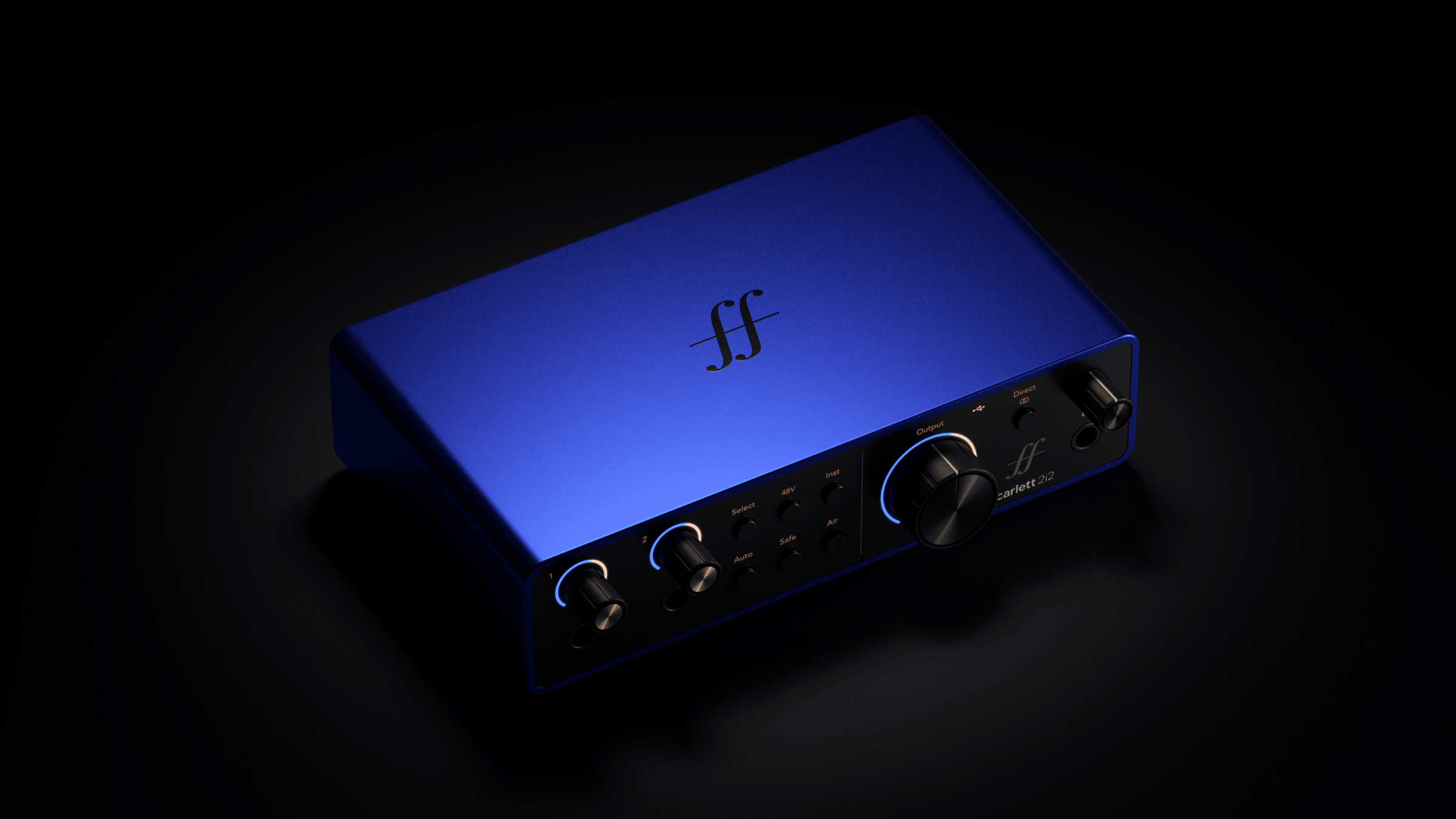
Phil Dudderidge OBE, Focusrite’s founder, captures the significance perfectly: “Focusrite, in either guise, has always been about bringing colour to the music!”. The 2i2 makes recording more accessible than ever – and now in a shade of blue.
For more information, head to Focusrite.
KT Tunstall announces Eye to the Telescope 20th anniversary tour for Australia and New Zealand
KT Tunstall is set to tour her groundbreaking debut album Eye to the Telescope in its entirety, marking 20 years since the record that launched her international career.
Catch up on all the latest news here.
Eye to the Telescope became a global phenomenon following its December 2004 release, driven by hits like “Black Horse and the Cherry Tree” and “Suddenly I See”. The latter gained massive exposure as the opening track for The Devil Wears Prada, earning KT the prestigious Ivor Novello Award and becoming the soundtrack to a generation.
Additional tracks “Universe & U” and “Other Side of the World” found their way into popular culture through Grey’s Anatomy, helping the album achieve over 4 million sales worldwide and 5x platinum status.
KT’s recent stripped-back performances supporting Train across Australia earlier this year showcased her captivating stage presence. These anniversary shows will feature full band arrangements, highlighting her loop-pedal artistry and powerful vocals that make her live performances so compelling.
Tour dates
Australia:
- Perth: Tuesday 19 May, Astor Theatre
- Brisbane: Friday 22 May, Princess Theatre
- Sydney: Saturday 23 May, Metro Theatre
- Melbourne: Sunday 24 May, Northcote Theatre
- Adelaide: Wednesday 27 May, The Gov
New Zealand:
- Auckland: Friday 29 May, Powerstation
- Wellington: Saturday 30 May, Meow Nui
Reflecting on the anniversary, KT notes: “Over the years, I’ve been told the most amazing stories of what these songs mean to people all over the world, how they have kept them company through love and loss.” These special anniversary performances offer fans a rare opportunity to experience the complete album that defined an era of British music.
Australia’s biggest guitar show is coming to Sydney next year
Guitar enthusiasts across Australia have reason to celebrate – the country’s premier guitar show is doubling its reach with an exciting new expansion in Sydney. Following the tremendous success of Melbourne Guitar Show 2025, organisers have announced the show will now bring the experience across both major cities.
Catch up on all the latest news here.
A new alternating home
Following extensive consultation with exhibitors and patrons, Sydney Showgrounds has been selected to host the inaugural Sydney Guitar Show on 7th-8th March 2026. The decision reflects demand from Sydney guitar fans who’ve watched Melbourne’s success from afar. Rather than diluting the experience, organisers have crafted a clever alternating schedule – Sydney takes 2026, then Melbourne reclaims hosting duties for 13th-14th March 2027. This biennial rotation ensures that guitar fans across both cities can attend the Guitar Show without compromise.
What to expect
The Sydney show promises the same interactive experience that made Melbourne a highlight of the Australian music calendar. Expect hands-on access to the latest gear, rare vintage instruments and live performances from a stellar line-up of artists. Both major brands and boutique makers from Australia and internationally will showcase their finest work, while workshops offer everything from technique masterclasses to industry insights. It’s the kind of comprehensive guitar celebration that turns weekend browsers into lifelong enthusiasts.
Tickets and exhibitor bookings
Tickets for the Sydney Guitar Show will go on sale in November, following the first program and exhibitor announcements. Exhibitor registrations open for non-AMA members from 1st October – perfect for retailers and manufacturers looking to connect with Australia’s passionate guitar community.
For more information on the Guitar Show, head here.
Review: Gretsch Synchromatic Falcon
The new Gretsch Synchromatic Falcon aims to provide a top-notch Falcon with upgraded materials and components at a mid-level price point, bridging the gap between an entry-level and top-shelf model.
Catch up on all the latest features and interviews here.
The result is a stunning guitar that delivers everything one could wish for in a Gretsch, from its dazzling looks to its unmistakable and monumental sound. Taking the mystique and beauty of the venerable Falcon design and placing it firmly in 2025 is no mean feat. Honouring the history of a beloved instrument whilst catering to the needs of modern players is a tricky balance to strike, but Gretsch has nailed it with this guitar.
Originally unveiled in 1954, the Falcon was dubbed by Gretsch ‘the guitar of the future’ as well as ‘the finest guitar we know how to make’. Gretsch, however, initially had no plans to manufacture the model. It was supposed to be a showpiece, much like GM’s Motorama “Dream Cars” of the day, but that quickly changed when the immense demand for the guitar became swiftly apparent. Since then, the Falcon has been immortalised by players such as Neil Young, Roy Orbison, Malcolm Young and John Frusciante, who famously used the guitar extensively on Red Hot Chilli Peppers’ Californication.
Combining the full-bodied tone of a humbucker with the top-end twang of a single coil, the Falcon’s Filter’Tron pickups are a perfect match for the warm, airy sound of its large hollow body. This massive yet balanced sound, along with the obvious beauty of the guitar itself, is why the Falcon remains one of the most revered guitars on the planet.
The Synchromatic Falcon arrived in a gorgeous Deluxe hard case with a lovely blue velvet lining. At first glance, the Falcon’s black and gold colour scheme is stunning, with every golden detail sparkling in the light like the contents of a treasure chest.
The Falcon’s body is lined with a textured, sparkling gold binding that ties everything together, and upon its control knobs are tiny red gemstones that almost seem to glow. On the gold plexi pickguard is the iconic Falcon logo, spreading its menacing wings in mid-flight as if to say “don’t mess with me”. This is one serious piece of kit.
The Synchromatic Falcon features a 2.5” deep laminated maple body with Semi-Arc bracing. A modified version of the classic Gretsch Trestle Bracing design, this bracing pattern features two ’feet’ under the bridge while eliminating the additional feet near the neck block that traditional Trestle Bracing has. This results in a ‘best of both worlds’ tone that provides the huge, resonant tone of Parallel Bracing, with the classic ‘snap’ and feedback-busting sustain of 1959 Trestle Bracing.
The Falcon’s maple neck feels incredibly comfortable and has a nicely balanced soft C shape. It has a nice, long 25.5” scale length that feels just right on a larger body style, and its ebony fretboard has a fairly flat 12” radius, which is particularly suited for lead guitar. The neck is also bound in a stunning gold sparkle and is adorned with Gretsch’s classic pearloid thumbnail inlays, 22 medium jumbo frets and a genuine bone nut. The headstock is loaded with gold Grover Rotomatic machine heads, which I have always found to be reminiscent of the shapes found in Aztec art.
This Falcon, like most Gretschs, is loaded with a very versatile control layout featuring a master volume with a treble bleed circuit, a master tone, individual volume controls for the bridge and neck pickups and a three-position pickup toggle switch.
In addition to this, the Adjusto-Matic bridge is secured with an ebony base for optimal stability and, of course, what Falcon would be complete without the iconic B60 Bigsby Vibrato arm? The direct-mounted Hi-Fidelity Filter’Tron pickups found on the Synchromatic Falcon feature Alnico 5 magnets and deliver the sought-after chime, articulation and balance that vintage Filter’Trons are known for. With enough twang for country and enough meat on its bones for hard rock, the Filter’Trons can do it all and sound better than ever in this model.
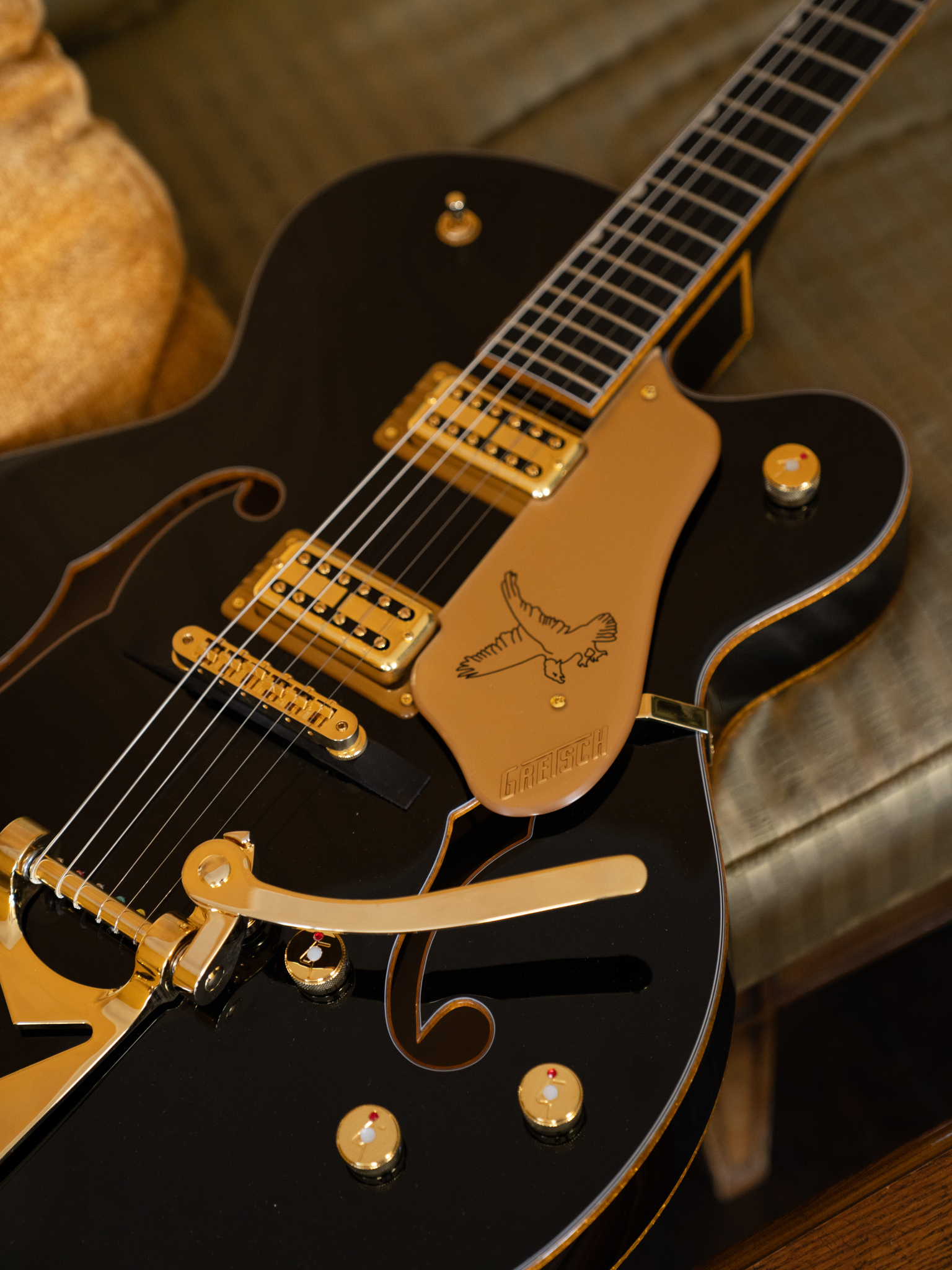
The bridge position has all the chime and crunch you could ever wish for, and plugged into an overdriven Fender amp, you will be wailing like Neil Young in no time. The neck position is smoother and jazzier but still has enough bite to cut through a mix and sounds absolutely delightful set clean with some reverb and a good amount of bottom end.
Both pickups are well matched, and there isn’t that nasty volume jump between the neck and bridge you get in some guitars. The middle position is particularly useful thanks to the combination of separate volume controls for each pickup as well as a master volume. This means you can create a blend of the two pickups to taste with the individual controls, and then control your overall volume with the master. This layout creates a myriad of tonal possibilities, making this guitar very versatile indeed. The Falcon’s Bigsby vibrato is also extremely effective and, having been masterfully set up, does well not to knock the guitar out of tune even with vigorous use.
Overall, the Synchromatic Falcon is an excellent rendition of a timeless model, with a reasonable midrange price point. It does absolutely everything you want a Falcon to do and looks absolutely stunning with its chic black finish and gold appointments. The Falcon is a big hollow body guitar with a big sound, but thanks to its extremely articulate Filter’Tron pickups, it produces an incredibly bright, detailed and honest tone.
Whilst the Synchromatic Falcon may not be the most exotic iteration of Gretsch’s beloved bird, it is most definitely in full flight here, and as menacing as ever.
Check out the Grestch Synchromatic Falcon here.
Markbass brings back the legendary LMK with modern 58R makeover
The new Markbass LMK 58R combines the classic tone that made the original famous with smart, modern updates.
Catch up on all the latest news here.
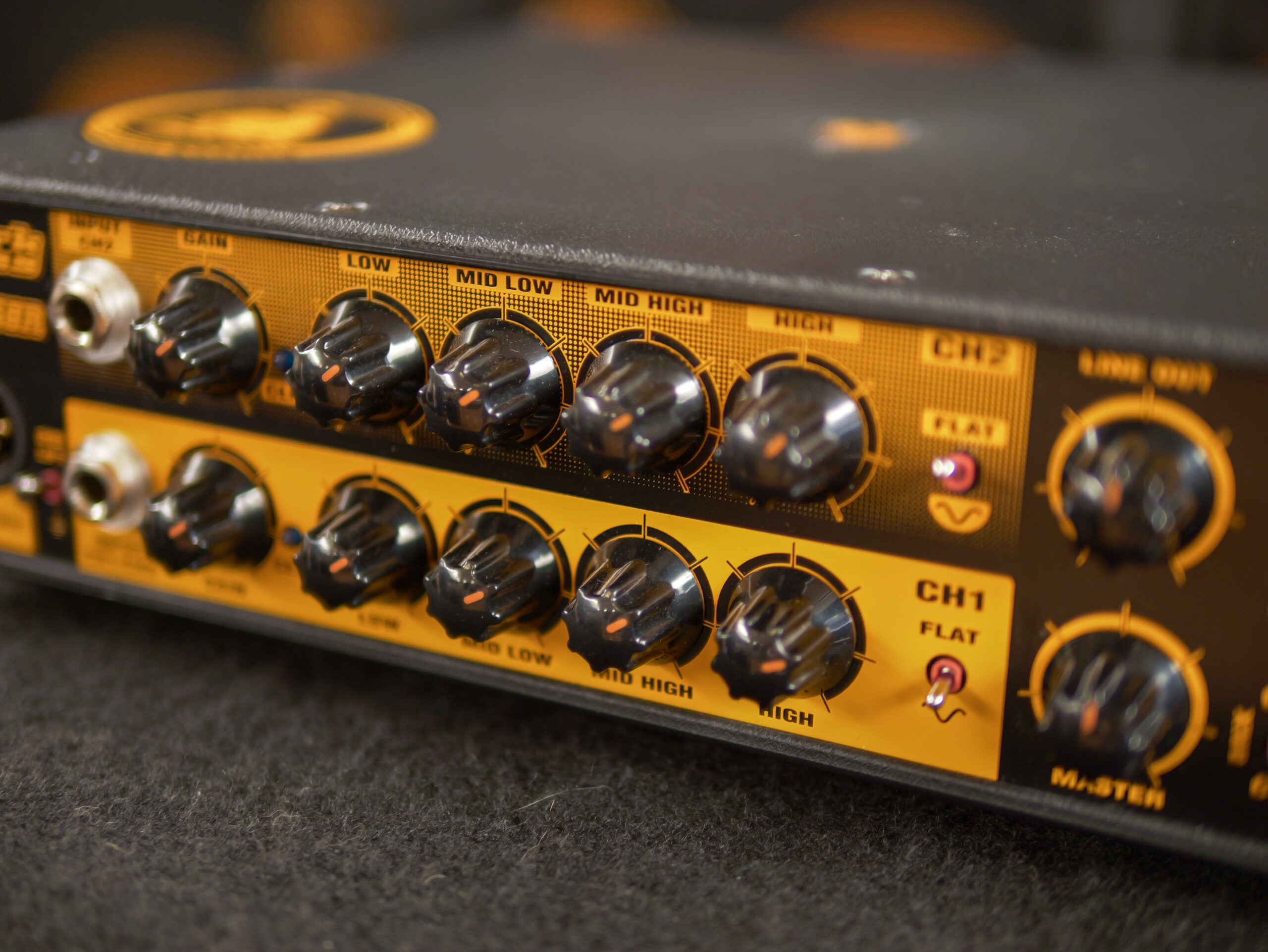
What makes the Markbass LMK 58R special:
- Two completely independent channels for maximum flexibility
- Set up different presets for two basses, or blend sounds from one instrument
- Each channel gets its own gain control and 4-band EQ
- Flat/scooped switch presets for quick tonal changes
- Auxiliary input for drum machines or backing tracks
Smart design choices:
- Nearly everything lives on the front panel (no more reaching around back)
- Only the speaker outputs and power stay on the rear
- Weighing in at just 2kg, it’s compact and genuinely portable
- High-quality chassis that can handle real-world gigging
The real game-changer is the new bi-band limiter that responds faster and more naturally than traditional limiters. Instead of squashing your entire signal, it lets the high-end breathe while keeping everything controlled. Players who love punchy attack at high volumes will notice the difference immediately.
Channel switching happens via an optional dual footswitch, so you can jump between clean jazz tones and distorted rock sounds mid-song without an issue. Alternatively, you can run both channels simultaneously to create layered textures that would normally require multiple amps.
Practical benefits:
- Perfect for multi-bass setups
- Great for session players who need quick tonal changes
- Backing track integration without extra gear
- Front-panel accessibility for cramped stages
Following Markbass’s 58R design philosophy, the LMK 58R places usability first, without sacrificing the quality tone that made the original such a studio and stage favourite.
Guitar tone creation just got ridiculously easy with Positive Grid’s BIAS X
Forget tedious knob-twisting and menu-scrolling. Creating professional guitar tones is now as simple as describing what you want. Positive Grid’s new BIAS X software lets you literally tell it what sound you’re after, and it delivers the goods in seconds.
Catch up on all the latest news here.
Here’s how it works:
- Type descriptions like “crunchy blues rock” or “lo-fi dream pop”
- Upload audio clips of the tones you want to recreate
- Ask for live tweaks using descriptors like “add more bite,” “less fuzz”, “more reverb”
- Get authentic, mix-ready sounds without the headache
Built on analysis of over 200 amplifiers, BIAS X captures the real behaviour of tubes, circuits and speakers (not just surface-level copies). The result feels genuine when you play, responding to your touch and dynamics like proper hardware would.
What’s inside:
- 33 advanced amp models with authentic compression and harmonic detail
- 63 effects built from component-level analysis of vintage gear
- New cabinet simulations developed with Spectre Digital
- Custom impulse response loader for personal cabinet sounds
The interface ditches complex menus and opts for a simple, easy-to-use drag-and-drop. Want parallel signal chains? Just drag them. Need to rearrange your pedal order? Drop it where you want it. BIAS X makes everything visual and instant.
Two ways to use it:
- Standalone for tone exploration and jamming
- Plugin for recording in your favourite DAW (VST3, AU, AAX)
Compatible with Mac and Windows, BIAS X proves that powerful doesn’t have to be complicated. Sometimes the best technology is the kind that just gets out of your way and lets you focus on creating the music you want to create.
For more information, head here.
Fender Studio receives major update with new amps and creative tools
Fender Studio has rolled out its first major app update, expanding the platform’s capabilities with new amplifiers, effects, jam tracks and enhanced arrangement tools.
Catch up on all the latest news here.
Building on the successful May launch, version 1.1 delivers significant enhancements across three key areas:
New Amps and Effects:
- ’65 Princeton Amp: classic clean sounds with natural breakup
- BB Hi-Gain: modern high-gain saturation for heavier styles
- ’65 Spring Reverb Pedal: authentic vintage tank reverb character
Enhanced Creative Tools:
- Five new professionally recorded jam tracks spanning Latin and folk genres
- Complete multitrack sessions with mute, solo and tempo adjustment controls
- Transposition capabilities for any tuning or key preference
- Total of 25 jam tracks now available covering pop, metal, ballads and more
Improved Workflow:
- Enhanced arranger editing with drag-and-drop functionality
- Quick song restructuring by inserting or replacing sections
- Streamlined creative process from inspiration to arrangement
Fender Studio maintains its commitment to accessibility across platforms, with version 1.1 available as a free download for iOS, Android, Windows, macOS and Linux systems. This cross-platform approach makes sure that musicians can capture their ideas whenever and wherever, on their preferred device or operating system.
The update reinforces Fender’s position in the mobile music creation space, providing both beginners and experienced players with professional-quality tools that fit in their pocket. All musicians know a creative spark and idea can come at any moment – this expanded feature set supports that creativity wherever inspiration strikes.
New users will receive immediate access to all updated content upon registration, making the enhanced Fender Studio experience available from the first session.
For more information on Fender Studio, head here.
Slash announces electrifying live album and concert film, Live at the S.E.R.P.E.N.T Festival
Backed by his formidable ensemble, Slash’s Blues Ball, the iconic guitarist delivers a gritty set that pays homage to the legends who shaped rock and blues. Joining Slash is longtime collaborator Teddy “ZigZag” Andreadis (keyboards, harmonica, vocals), Tash Neal (rhythm guitar, vocals), Johnny Griparic (bass, backing vocals) and Michael Jerome (drums).
Catch up on all the latest news here.
The performance tears through blues standards and rock staples from icons including Bukka White, Howlin’ Wolf, Fleetwood Mac, Freddie King and Jimi Hendrix. Standout tracks include Slash’s take on “Parchman Farm Blues”, “Killing Floor” and “Born Under a Bad Sign”, alongside the smoky soul of “Stormy Monday” and a fiery rendition of “Stone Free”.
Live at the S.E.R.P.E.N.T Festival also features Slash debuting an original composition called “Metal Chestnut” before diving into Robert Johnson’s “Cross Road Blues” and closing with Elmore James’s “Shake Your Money Maker”.
The first single, “Oh Well (Live)” transforms Fleetwood Mac’s classic into an unmissable live experience. Channelling Peter Green’s blues roots, Slash’s performance feels both timeless and fiercely alive.

The concert film includes candid behind-the-scenes interviews where Slash reflects on his connection to blues and the stories behind the songs. He also talks about his reverence for the artists who paved the way for rock’s evolution.
Available formats include 2CD+DVD Digipak, 2CD+Blu-ray Digipak and heavyweight black 3LP gatefold editions. The DVD and Blu-ray feature the full concert film with documentary segments in both PCM Stereo and DTS 5.1 audio.
Slash’s Blues Ball delivers exactly what the title promises – the blues performed loud, live and dangerous, showcasing why Slash remains one of rock’s most compelling performers.
To pre-save the album, head here.
Extreme Music launches groundbreaking production music panel for Avid Media Composer
The new tool is essentially a plugin panel that sits inside Avid Media Composer – the professional video editing software used across film, television and advertising. This industry-first integration embeds Extreme Music’s comprehensive catalogue directly into the editing interface, transforming how creators discover, audition and license music for their projects.
Rather than juggling multiple platforms, editors can now search thousands of tracks, preview selections and secure licences all within their familiar editing environment – a huge win for production.
Catch up on all the latest news here.
“Extreme Music has always taken an unconventional approach in bringing opportunities to creators,” explains Russell Emanuel, Co-Founder, President & CEO of Extreme Music. The partnership puts the company’s entire catalogue “more easily into the hands of the editor community,” accelerating the creative process.
Behind Extreme Music’s reputation lies an extraordinary roster of collaborators, including Hans Zimmer, Quincy Jones, Snoop Dogg, Deadmau5 and Sir George Martin. These partnerships have elevated production music to commercial-grade standards, making professional-quality soundtracks accessible to creators at every level.
The new panel delivers sophisticated functionality wrapped in an intuitive design. AI-assisted search capabilities help editors filter tracks by theme, mood or keyword, while the drag-and-drop functionality streamlines the integration process. Broadcast-quality audio files, including stems and cutdowns, ensure professional results regardless of project scope.
Guillaume Aubuchon, Senior Director of Product Management at Avid, emphasises the partnership’s broader mission: “By embedding Extreme’s unparalleled catalogue into our trustworthy platform, we are united in the mission to inspire the next generation of creators.”
Beyond technical innovation, the collaboration addresses longstanding industry pain points. Traditional music licensing often involves complex negotiations and lengthy approval processes. Avid Media Composer removes those barriers, allowing creators to focus on storytelling rather than administrative hurdles.
With global accessibility, both professional studios and independent creators worldwide can leverage the same high-calibre resources. Daily catalogue updates maintain fresh content options, whilst collaborative features support team-based projects through playlist sharing and preview capabilities.
Jon Platt, Chairman & CEO of Sony Music Publishing, positions the launch within broader industry evolution: “We are committed to providing songwriters and composers with the best tools to support their creativity.”
The panel is now available for download, marking a significant step for smoother creativity workflow in professional video production.
Head here for more information.
PRS announces S2 Special Semi-Hollow Reclaimed Limited Edition guitars
Limited to just 700 pieces worldwide, each of the S2 Special Semi-Hollow Reclaimed guitars features a stunning Peroba Rosa top, sourced from 100-to 150-year-old timber traditionally used as house siding in Brazil. Cuban mahogany necks carry their own remarkable history – salvaged from Puerto Rico following Hurricane Maria in 2017, giving new life to trees that might otherwise have been lost. Completing the story, Guaribu Preto fretboards utilise Brazilian timber once employed as structural house beams.
Catch up on all the latest news here.
“Wood is a crucial element to our guitar making heritage,” explains Paul Reed Smith. The company’s Senior Wood Buyer, Michael Reid, has cultivated relationships with suppliers worldwide since 1980, ensuring these reclaimed materials meet PRS’s exacting standards while preserving their unique character.
Rather than hiding the wood’s history, PRS celebrates it. Natural satin nitro finishes reveal nail holes, wear marks, and discolouration that tell each piece’s story. Combined with the semi-hollow body construction, these aged woods deliver a distinctive tone that’s both punchy and warm.
There’s no need to sacrifice versatility for sustainability with these limited edition guitars – each one maintains the S2 Special Semi-Hollow’s renowned pickup configuration, featuring humbuckers flanking a Narrowfield pickup, controlled by a 5-way blade switch and dual mini-toggles. This setup creates twelve distinct pickup combinations, ensuring players can explore everything from crystalline single-coil tones to rich, vintage humbucker warmth.
Beyond environmental consciousness, these instruments represent PRS’s commitment to craftsmanship. Each 25-inch scale neck features the company’s Pattern Regular profile, while Phase III locking tuners and the patented tremolo system maintain the reliability PRS players expect.
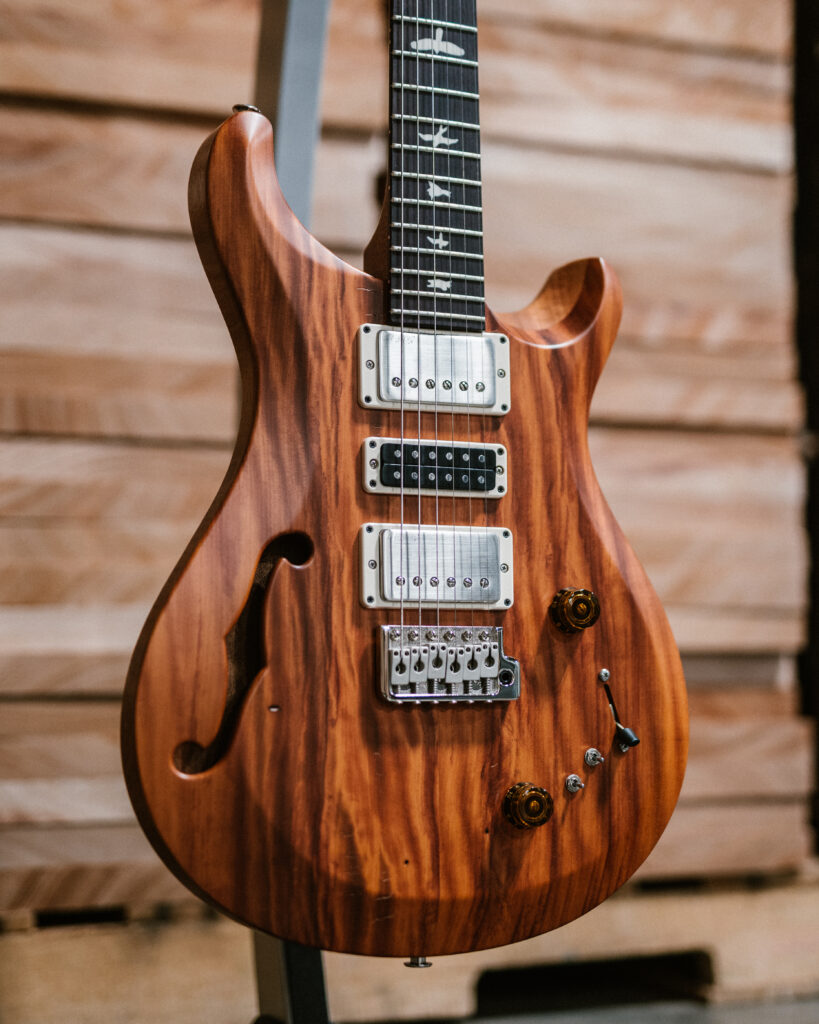
Available exclusively in Natural finish, the S2 Special Semi-Hollow Reclaimed Limited Edition proves that sustainable guitar making doesn’t require compromise, but instead creates opportunity for something truly special.
For local enquiries, head here.
Prince and the Revolution: Around the World in a Day celebrates 40th anniversary with deluxe reissue
Originally released on 22 April 1985, just 15 days after Prince’s Purple Rain Tour concluded, the album represented a bold artistic gamble that paid off spectacularly. While Warner Bros. wanted to capitalise on Purple Rain’s massive success with a European tour extension, Prince instead delivered a psychedelic, inward-facing collection that defied all industry expectations.
Catch up on all the latest news here.
Breaking every promotional rule of the mid-’80s hit factory, Prince insisted the album be experienced as one uninterrupted story. This meant there was no lead single, no staged rollout and no hype machine. “Raspberry Beret” wasn’t serviced to US radio until a month after release, yet the album still flew off shelves, selling over two million copies and spawning multiple Billboard Top Ten hits.
Grammy-nominated engineer Chris James has meticulously remixed the album in Dolby Atmos using the original multi-track masters, while Bernie Grundman handled the new stereo remastering. The standard reissue arrives on streaming, download, CD, limited-edition blue marble vinyl, and exclusive picture disc LP through the Official Prince Store.
A deluxe edition expands the experience across 2CD or 3LP formats, featuring extended versions of A and B-sides. Highlights include the digital debut of the “Paisley Park (Remix)” and the nearly 22-minute 12″ version of “America” making its CD debut.
The album’s artwork, painted by Doug Henders between the Purple Rain Tour perfectly captured Prince’s artistic evolution from the stark imagery of his previous release. Characteristically, Prince was already moving forward by release day, returning to Sunset Sound on 21 April 1985 to record “Sometimes It Snows In April” for his next project, Parade.
Around the World in a Day 40th anniversary editions are available for pre-order here.
‘You really can’t shut me up once I get started’: Stewart Copeland still has stories to tell
You’ve heard all the jokes about why you should never give the drummer a microphone – but in the case of Stewart Copeland, it honestly might just be as entertaining as watching him take to the kit.
Catch up on all the latest features and interviews here.
The veteran American drummer, who came to prominence in the late ’70s as one third of The Police, has never been backward in coming forward. He’s been brutally and hilariously honest about his time in the band, and about his career at large, which has all led to the creation of Have I Said Too Much?, his first-ever spoken word show.
Set to hit Australian shores in January 2026, the tour will see Copeland in conversation with Perth radio presenter Sarah Tout each night – regaling audiences with all kinds of anecdotes about drumming, dysfunctionality and everything in-between.
“I’ve done this tour once before, in England,” says Copeland, on Zoom to Mixdown from his home studio, The Sacred Grove, out of Los Angeles. “It was just kind of an experiment – I do a lot of talking, and someone made the suggestion that the talking could be turned into a show. I gave it a try across some smaller cities and towns across the country – places like Cheltenham and Chipping Norton.
“They were in very cozy theatres, and they proved to be a lot of fun. You really can’t shut me up once I get started, so naming the tour Have I Said Too Much? proved to be perfect.”

Copeland’s impending return to Australia follows on from his Police bandmate Andy Summers doing so last year with his own show, entitled A Cracked Lens + A Broken String.
A blend of spoken word, photography and music, Summers’ one-man show is decidedly different to Copeland’s – per admission from the man himself. “Andy is a great storyteller,” says Copeland. “He always had such a great sense of humour, and that really shines through when he’s talking about his photographs.
“We’re very different stylistically, though. My show’s not nearly as fancy. That’s just the difference between drummers and guitarists, isn’t it? Guitarists operate on a much higher level in general. They know what key the songs are in – ‘this is in F sharp minor!’ – and I have no idea what any of that means. That’s why drummers need bassists – to translate for us.”
Although only together for less than a decade, The Police remain one of the highest-selling and most successful bands of all time. The trio – Copeland, Summers and vocalist and bassist Sting – were often at loggerheads, with each having a musical style that drastically differed. Somehow, however, it all managed to tessellate in a way that created some of the most distinctive, influential rock music of the era.
One of the key differences that Copeland himself has noted over the years was his free-range, improvisational style in contrast to Sting’s studious, meticulous manner. “We were on different missions,” he says.
“The way he (Sting) would play music, it was all to serve the song. I didn’t know anything about the song – I was just banging stuff, really. Nothing was mapped out – we didn’t even really have time to.

The first album (Outlandos d’Amour) was material we’d toured around the country before recording, but the next two albums (Reggatta de Blanc and Zenyatta Mondatta) were all songs we were recording roughly 20 minutes after we’d first heard them. The other two could redo stuff and layer it 10 times over. My drums were stuck for the rest of my life.”
Copeland is aware of his legacy as an influential drummer. While he remains grateful for the kudos he has been given across his career, he insists that all of his distinctive traits either came about by instinct or accident. Take, for instance, his use of the bell on the ride cymbal when accenting a chorus on hits like ‘I Can’t Stand Losing You’ and ‘Every Little Thing She Does is Magic’.
“That comes from listening out for the vocals,” he explains. “I never really listened to the lyrics, but I was definitely following the rhythm of the vocals and the melody.” As for his use of late or delayed drum fills? “That was because I didn’t know the song!” he laughs. “It was a combination of their impatience and my laziness. We would only do two or three takes, and that was it.
“They worked with whatever you put down. Look at ‘Wrapped Around Your Finger’, for example. I didn’t know how to play to it, because he’s hardly singing the lyrics. He’s mumbling, so I had no idea what was a chorus and what was a verse. I would make the change into a different vibe, any old place, not necessarily where the actual chorus is.”
If anything, Copeland thinks that his legacy is one that’s been studied too much. He proceeds to share a hilarious anecdote from an online investigation that read far too deeply into something he had considered completely innocuous. “I once saw a clip on YouTube of this team who were analysing the towel I had taped to the side of my snare drum,” says Copeland – his eyes widening at the absurdity of such a sentence.
“’Here’s the same snare drum. Here’s the snare without the towel. Here’s what it sounds like with the towel. Here’s what it sounds like with the towel attached by gaffer tape. They’re doing this whole analysis of a goddamn towel. I hate to break it to them, but the towel was there because I played in shorts and would always bang my knees up. It had nothing to do with the sound. They didn’t even get the right snare!”

Whether you’ve ever had a burning question about what brand of towel Copeland uses, or just want to hear one of drumming’s biggest personalities shoot the shit, Have I Said Too Much? is the show for you.
Copeland is particularly excited about returning, as it will mark his first time here in 18 years by the time he touches down on Australian soil. “Australians are very cheerful people,” he says.
“We always had a lot of fun playing Australia, because it all just felt immediately familiar. I would say it’s closer to America than it is to England in terms of the attitude. It’s a lot of can-do positivity, which is a little more casual than your Brits.”
Fans will remember the last time The Police were in Australia, back in early 2008, as part of their stadium-filling reunion tour. What many have forgotten, however, was who that tour was with: None other than Fergie, who had branched out into a solo career at the time with her multi-platinum debut The Dutchess.
It was an odd pairing, but Copeland came out of it with an unlikely admiration for the glamorous popstar. “I never took the Black Eyed Peas seriously, but on that tour I saw how hard-working she was,” he says.
“Her band were really great musicians. She’d been around the block a couple of times and had really been dragged through the hedge backwards by the industry. She’d paid her dues; I had great respect for that.”
Find tickets to Stewart Copeland’s Have I Said Too Much? here.
Chuck Sics drops long-awaited debut EP, Slipstream
Chuck Sics debut balances both cohesive alt-pop-rock production with pensive and occasionally cynical lyricism across its five tracks.
Keep up with the latest news here.
Opening with his first single, “Redo,” Slipstream begins on an upbeat, psychedelic note, wrapped in warm instrumentals and explores unrequited love. “M.A.D” follows with Britpop flavours, percolating rhythms and smooth vocals, before the title track delivers buoyant melodies, dazzling basslines and dancefloor-ready beats. “I’ve Been Thinking” serves as the penultimate offering, leading to a closing track that drifts into a melodic, ethereal haze and thoughtful contemplation.
It may be his debut EP, but Chuck is no stranger to music. He played trumpet in primary school, progressing to piano before discovering guitar at age 12. He followed with bass, vocals and occasionally drums, with childhood dreams of becoming a concert pianist eventually giving way to rock persuasions. Slipstream showcases Chuck’s remarkable versatility as both songwriter and musician, with every instrument, production element and mix handled solo.
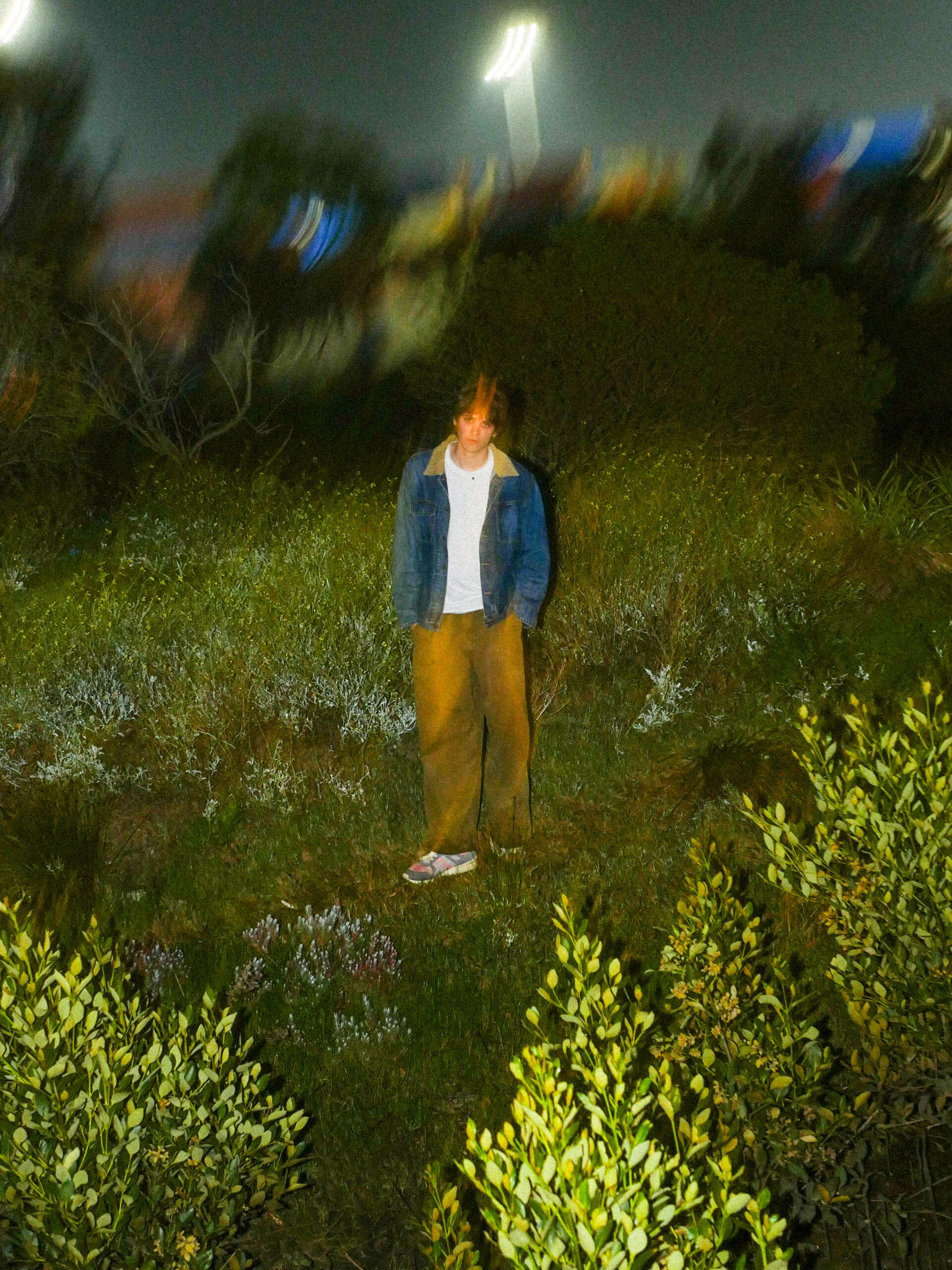
Chuck recently played live with his band at Sydney’s Trocadero Room, giving audiences a taste of what was to come. But Slipstream is where his vision really comes together — five years of work that’s ready to reach a much wider audience.
“It’s been a long time coming,” Chuck reflects. “I worked a lot of nocturnal hours putting all of these songs together over five years. ‘I’ve Been Thinking’ was the first song I finished for this record, and it laid the groundwork for the aesthetic and vibe of everything I wrote afterwards.”
Legendary Buckingham Nicks album finally returns after 50-year absence
Buckingham Nicks, the only studio album recorded by the duo before joining Fleetwood Mac, is out now across multiple formats after being sourced from the original analogue master tapes. Remastered by Chris Bellman, the album arrives on vinyl, CD and digital platforms.
Keep up with the latest news here.
Originally released on September 5th, 1973 and recorded at Sound City Studios in Los Angeles with producer Keith Olsen, the 10-track album captured the pair’s distinctive harmonies and contrasting songwriting styles.
Despite quickly fading from the commercial stage, Buckingham Nicks became legendary within music circles. Everything changed in late 1974 when Mick Fleetwood visited Sound City whilst scouting recording locations. Producer Keith Olsen played “Frozen Love” to demonstrate the studio’s capabilities, and the track’s ambitious scope immediately caught Fleetwood’s attention.
When guitarist Bob Welch left Fleetwood Mac, Fleetwood approached Buckingham about joining the band. However, Buckingham insisted he and Nicks were a package deal – a condition Fleetwood ultimately accepted. Both artists officially joined Fleetwood Mac on New Year’s Eve 1974, launching one of the band’s most celebrated and recognised eras.
“We knew what we had as a duo; two songwriters that sang really well together,” Nicks reflects in the new liner notes by veteran journalist David Fricke.
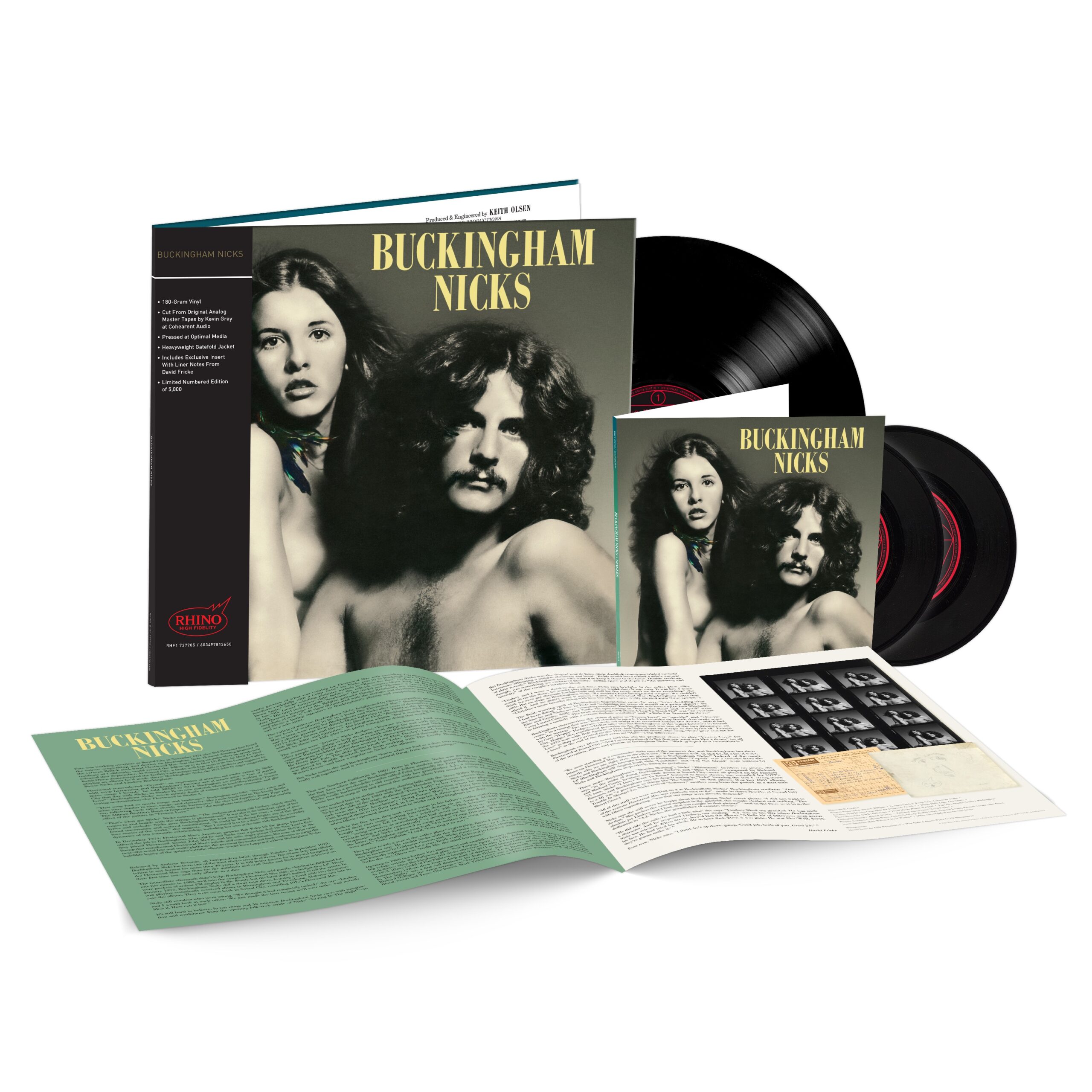
Buckingham acknowledges their youth during recording but notes the album’s lasting quality: “it stands up in a way you hope it would, by these two kids who were pretty young to be doing that work.”
The vinyl is available in custard, baby pink, violet and baby blue editions.
Buckingham Nicks is available through Rhino Records here.
Alesis launches the TurboMax electric drum kit for aspiring drummers
Designed specifically for beginners but packed with professional-grade sounds, this compact electric drum kit gives new drummers everything they need without the headaches of piecing together a setup. Another bonus: you won’t give your neighbours a headache, either. It’s perfect for bedroom practice sessions, sharehouses or apartment living.
With four ultra-responsive 8-inch mesh heads the TurboMax has an authentic drum feel to it, so you can easily translate your practice from e-kit to acoustic kit.
Keep up with the latest news here.
The advanced drum module serves up 12 diverse kits and 110 sounds to keep the creativity flowing. Bluetooth connectivity means you can play along to tracks or follow online tutorials without missing a beat. Built-in tempo control and a metronome help develop your timing, while onboard recording lets you capture every time you smash that roll.
Alesis hasn’t forgotten the essentials either. Every kit ships with a collapsible throne, headphones, sticks, a power supply and all necessary cables – basically everything you need to get started. The full-height metal mounting rack keeps everything stable during energetic sessions, while the full-size kick and hi-hat pedals make sure your technique is right off the bat.
Three expressive 8-inch cymbals round out the seven-piece setup, giving drummers a complete sonic palette to explore. Headphone provide the flexibility drummers need for private practice, but the kit also comes with line outputs so you can plug into bigger sound systems when you want to hear your work at full volume.
The TurboMax also includes a sweet bonus: 30 days of Melodics Premium plus 100 free drum lessons to help fast-track the learning process. It’s the ultimate starter kit for anyone serious about drumming but not ready to wake the whole neighbourhood.
For more information, head here. For local enquiries, contact Elfa.
Where are they now: the people on the world’s most iconic album covers
On August 12, 2025, the death of legendary Hollywood stuntman Ronnie Rondell was announced. Film magazines paid tribute to the 88-year-old as being a “one of a kind” mentor.
Keep up with the latest news here.
Rondell had been a stuntman since the 1950s, appearing on films and TV shows including The Karate Kid, Days of Thunder, Waterworld, Predator 2, Lethal Weapon, The Crow, The Matrix Reloaded, Star Trek, Charlie’s Angels and Speed.
In 1970, he co-founded the Stunts Unlimited talent agency, supplying stunt performers for Hollywood films. But what is so interesting is that Rondell’s death was acknowledged by music magazines and publications across the globe.
This is because Ronnie Rondell featured on the cover of one of the best-known rock albums of all time – Pink Floyd’s Wish You Were Here – while on fire.
Many of the people who featured on classic album covers went on to find some kind of fame of their own.
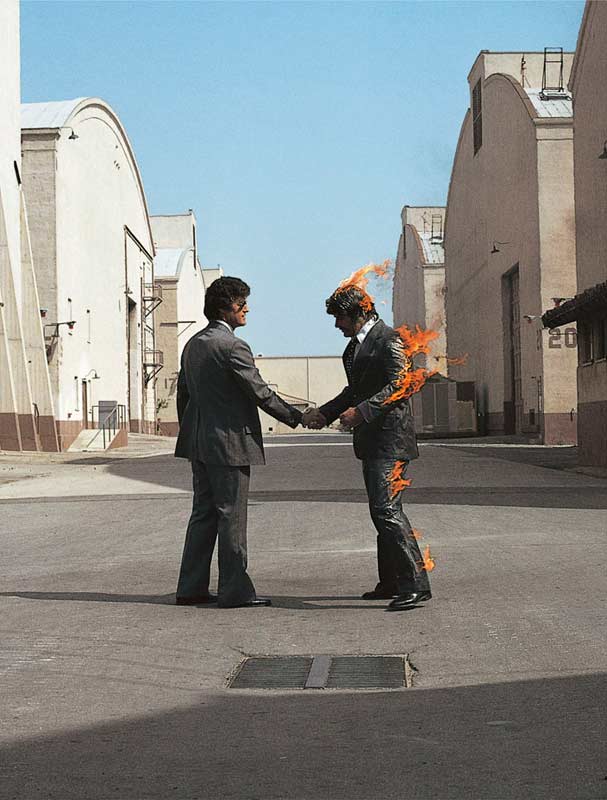
PINK FLOYD: WISH YOU WERE HERE (1975)
Behind the concept of Wish You Were Here’s artwork is the idea that humans hide their true feelings in fear of getting burned. UK design studio, Hipgnosis, had previously worked on Pink Floyd’s albums, and this time chose to zero in on Wish You Were Here’s third track. “Have a Cigar” speaks to insincerity in the music business.
Hipgnosis’ co-creators Storm Thorgerson and photographer Aubrey “Po” Powell were kicking around ideas. Thorgerson suggested, “What about an image of two businessmen, and one of them is getting burned in a deal?” Powell questioned how they were going to do that, and Thorgerson simply replied: “Set a man on fire.”
At Burbank Studios in California, Powell took the shot of two stuntmen depicting businessmen shaking hands, and one of them was on fire. This was a particularly dangerous stunt – usually, a shot of someone on fire is full of action, but Wish You Were Here’s iconic album cover demanded the two men shake hands and be still.
Ronnie Rondell was the man on fire. Since the shot was taken before CGI, Rondell was set alight for real, dressed in a fireproof suit underneath his business fit.. His head was protected by a hood, underneath a similarly fireproof wig. Powell knew the stunt was an unpleasant one, but Rondell agreed to do 14 shots. “We were lucky there was no wind while we shot,” Powell recalled.
Worth noting: Things went awry on the 15th shot. A gust of wind blew the fire straight into Rondell’s face, burning off an eyebrow and part of his moustache. Powell told Rolling Stone in 2017, “his team jumped on him, sprayed him with extinguishing foam and saved his life. He just got up from that and said, “That’s it. I’m never doing this again.” But I had it in the can.”

WEEZER: HURLEY (2010)
US actor and comedian Jorge Garcia appeared first as Hector Lopez on Becker, and notably as Hugo “Hurley” Reyes on Lost from 2004 to 2010.
The album cover of Hurley was cropped from a real-life photo of Garcia embracing Weezer’s Rivers Cuomo when they met by chance during a TV taping. Cuomo stated, “No words are on the cover because all we wanted was his amazing face.” Fair enough.

Jorge Garcia, now 52, most recently starred in the comedy series Bookie (2023-2025).
Worth noting: At some point, guitarist Brian Bell claimed the album title was a branding exercise for surf clothing company Hurley International, which he said paid for the recording. Bizarrely, later on, Bell said it was “an accident”, even though Hurley International did end up creating a line of Weezer clothing.
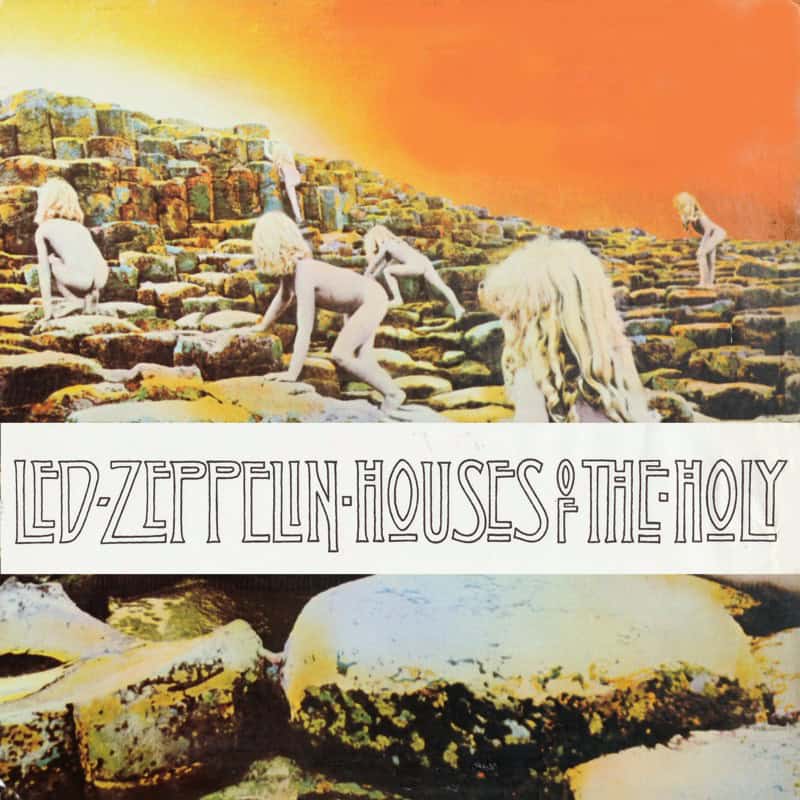
LED ZEPPELIN: HOUSES OF THE HOLY (1973)
The striking cover of two naked blonde children climbing up the stones of the Giant’s Causeway in Northern Ireland was inspired by Arthur C. Clarke’s influential 1955 science fiction novel Childhood’s End. The novel was about alien overlords who invade Earth and turn it into a peaceful paradise.
Houses of the Holy’s artwork concept was by London art collective Hipgnosis (who were also behind Pink Floyd’s Dark Side Of The Moon the same year). The first idea – of a loud green tennis court and racket – came from Storm Thorgerson, reflecting his tongue-in-cheek comments that Zeppelin’s music was a “racket”. Incensed, Zeppelin sacked him and hired his colleague, photographer Aubrey Powell.
The shoot was a miserable one: it took ten days, from dawn to sunset. It rained throughout. However, an accidental tinting during post-production gave the cover that apocalyptic look Powell had been trying to emulate throughout the process.
Aged seven and five at the time, the cover features siblings Samantha and Stefan Gates. Samantha went on to become a respected actress, appearing in films Edward the King, the Water Babies, Alice Through the Looking Glass and Shades of Darkness.
Stefan became a food writer and a TV presenter for the BBC’s Cooking in the Danger Zone. The show involved travelling to “dangerous places” and trying out their food – including eating rats in India, radioactive soup in Chernobyl, 18-month-old rotting walrus in the Arctic Circle, and sheep testicles in Afghanistan.
Stefan hadn’t listened to Houses of the Holy until 2010, when a BBC documentary crew took him back to Giant’s Causeway and filmed him listening to the iconic album on an MP3 player. He commented, “I found the cover very scary. It was so apocalyptic”. Mission accomplished.
Worth noting: When Houses of the Holy was released, some stores refused to stock it because of the nudity. Atlantic Records wrapped it in brown paper to cover the image. Jimmy Page couldn’t see the problem. “Children are houses of the holy; we’re all houses of the holy – I don’t see how that’s naughty.”
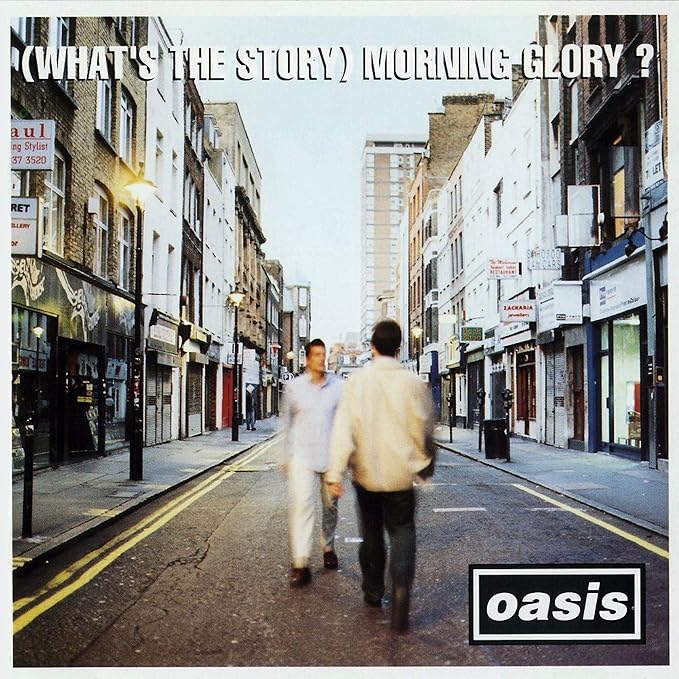
OASIS: (WHAT’S THE STORY) MORNING GLORY (1995)
The cover of (What’s the Story) Morning Glory features two men passing each other on the street. If the cover comes across a little mysterious, it’s probably because it came from a quote Noel Gallagher was spouting at the time: “There aren’t ever answers. There are only ever more questions”.
“The idea was that you had these two guys passing in the street,” cover designer Brian Cannon explained. “You didn’t have any idea who they were, where they were going, what they were saying to each other.
On the back sleeve, you see one of the guys disappearing, and he’s going: ‘What the f**k? What the f**k did he just say to me? What the f**k was that interaction all about?’
Cannon had met Noel by chance in a lift in Manchester even before Oasis got signed, he recounted to The Big Issue. Noel glanced at Cannon’s Adidas sneakers, which he’d bought in Italy and were not available in the UK, and said “Alright, where the f**k did you get them trainers from?” Gallagher continued and asked Cannon what he did for a living, and was impressed when he found out Cannon was a record sleeve designer and had recently worked for The Verve.
Cannon explained, “So he says, ‘When we get signed’ – not if, mind – ‘you’re gonna design my sleeves.’ Then he got out of the lift, and that was it. That’s a true story.”
For the Morning Glory cover, Cannon wanted to make the first shot at first thing on a Sunday morning at 5am. Probably to no one’s surprise, Noel and Liam didn’t turn up after drinking all night, even though they were supposed to be the feature on the cover.
Cannon had to move quickly into Plan B and ended up playing the guy with his back to the camera. The other man featured on the cover is DJ Sean Rowley, and if you look closely at the background to the left, the album’s producer, Owen Morris, holds the album’s master tape in front of his face.
The street was Berwick Street in London’s Soho district, chosen because there were a lot of record stores there at the time. They took one shot at Berwick Street and wandered around taking more clicks, but that first shot was the one Cannon had envisioned.
Cannon went on to do two more Oasis sleeves (being a North Englishman and sharing their humour, he became close to the Gallaghers) and also worked for an array of acts including The Verve, Suede, Ruthless Rap Assassins and Super Furry Animals. He also managed the Scottish experimental Beta Band.
Worth noting: Cannon’s next Oasis sleeve, Be Here Now, cost $750,000. Getting the Rolls-Royce into the swimming pool took two long days.

BLINK-182: ENEMA OF THE STATE (1999)
Before landing on Enema of the State, Blink-182 were tossing up Turn Your Head And Cough, Vasectomy, Vasecto-you, and Does That Look Infected? for the title. But the idea was always for the album cover to feature a sexy nurse.
Their record company gave the band a collection of models’ photos and asked them to choose, and ultimately, they went with Janine Lindemulder. She went on to play the nurse on the cover, about to give the band an injection, and also appeared in the music videos for “What’s My Age Again” and “Man Overboard”.
What the band didn’t know was that Lindemulder was a well-known adult entertainment star and had also appeared in the Howard Stern movie Private Parts.
Soon after the shoot, Lindemulder left the industry to raise her son and planned to become a school teacher. What then followed was a marriage in 2022 to West Coast Choppers founder Jesse James – a turbulent one, with accusations of domestic violence, cheating, and a divorce when she was seven months pregnant with her daughter. In between stints in adult entertainment, there were reports of jail for tax evasion and a spell in rehab. Lindemulder has moved to Oregon and is active on social media.
Worth noting: The original pressings of Enema of the State featured a red cross on the nurse’s uniform; however, Red Cross, the organisation, told the band it was illegal for anyone to use it except for them. The cross was dropped from the cover before lawyers got involved.
SoundMerch Australian Music Prize celebrates 21 years of discovering Australia’s best artists and albums
Founded in 2005, The SoundMerch Australian Music Prize has spent more than two decades championing local musical talent, with The Drones’ album Wait Long By the River and the Bodies of Your Enemies Will Float By claiming the inaugural award. Since then, household names like Troye Sivan and Amyl and the Sniffers have joined the prestigious list of nominees and winners.
Keep up with the latest news here.
Past winners, including the Avalanches, Genesis Owusu, Courtney Barnett, Hermitude and the Jezabels have all benefited from the recognition that comes with taking home the coveted prize.
The judging process remains thorough with musicians, music retailers and media folk committing to listening to every eligible album from start to finish. Albums keep rolling in until October 9th, then the real work begins: narrowing hundreds down to just nine finalists before the judges meet face-to-face to hash out the winner.
Come November 6th, principal sponsor SoundMerch will hand over $50,000 to the winner. JB Hi-Fi, Mushroom Music, EMI and Sony chip in too, while the Australian Government has backed the prize through Music Australia for the second year running.
Beyond financial rewards, The AMP has established itself as Australia’s answer to the UK’s Mercury Prize, offering emerging and established artists alike a platform to reach growing audiences across the nation.
For more information, head here.
Paul Kelly, Missy Higgins and the Cruel Sea headline Red Hot Summer Tour 2026
The renowned outdoor festival is set to celebrate Australian music with Paul Kelly topping the bill, alongside beloved artists Missy Higgins, the Cruel Sea, the Cat Empire, Kasey Chambers and Jess Hitchcock.
Keep up with the latest news here.
Kelly brings four decades of storytelling mastery and classics like “How to Make Gravy,” “To Her Door,” and “Deeper Water” to stages across the country. Fresh from a sold-out arena tour, Paul Kelly continues to prove his creative vitality. Missy Higgins joins the lineup after a transformative 2024 that saw her album The Second Act top the ARIA charts and her induction into the ARIA Hall of Fame.
The Cruel Sea returns following their first new album in 23 years, while The Cat Empire brings fresh energy with their latest release, Bird in Paradise. Kasey Chambers joins the lineup, delivering her emotionally charged stage presence and Jess Hitchcock – Kelly’s self-described “secret weapon” – will showcase both collaborative work and solo material.
Red Hot Summer Tour 2026
- Warrnambool: Saturday 17 January, Warrnambool Racecourse
- Lake Macquarie: Saturday 24 January, Speers Point Park
- Port Macquarie: Saturday 31 January, Westport Park
- Southport: Sunday 1 February, Broadwater Parklands
- Werribee South: Sunday 8 February, Werribee Park
- Berry: Saturday 14 February, Berry Showground
- Bella Vista: Sunday 15 February, Bella Vista Farm
- Wodonga: Saturday 28 February, Gateway Lakes
- Launceston: Sunday 8 March, Launceston Country Club
- Bendigo: Saturday 14 March, Bendigo Racecourse
- Victor Harbor: Saturday 21 March, Kent Reserve

Presale starts Wednesday 24 September 9am-11:59pm (local time). General sale is on Thursday 25 September 9am via Ticketmaster.
